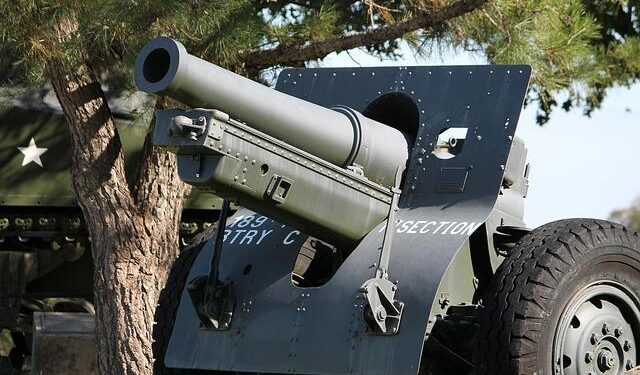The United States and Russia convened in the United Arab Emirates following a recent “understanding” reached with Ukraine, signaling a potential shift in diplomatic engagements amid ongoing tensions. The high-level meeting, held in a neutral venue, underscores efforts by all parties to navigate complex geopolitical challenges and explore avenues for dialogue. As global attention remains fixed on the conflict in Eastern Europe, this development marks a noteworthy moment in the evolving international response.
U.S Russia Engage in High Stakes Diplomacy in UAE Following Breakthrough with Ukraine
Following a significant breakthrough between Kyiv and Moscow, representatives from the United States and Russia convened in the United Arab Emirates to advance a fragile diplomatic dialogue aimed at de-escalating tensions in the region. The meeting underscores an unusual but critical opening for dialogue amidst ongoing conflict, signaling both powers’ willingness to explore avenues beyond direct confrontation. While details remain confidential, sources suggest discussions encompassed key security guarantees, humanitarian corridors, and potential frameworks for sustained communication.
Key focal points reportedly included:
- Ceasefire enforcement: Establishing monitoring mechanisms to prevent further hostilities.
- Energy cooperation: Addressing concerns over global energy markets affected by the conflict.
- Prisoner exchanges: Exploring confidence-building measures through humanitarian gestures.
Analysts caution that while the talks represent a step toward easing hostilities, deep-rooted disagreements remain. The UAE’s neutral position as host has been instrumental in facilitating this dialogue, providing a discreet platform away from traditional Western and Russian spheres of influence.
Analysis of Strategic Interests Driving the Middle East Summit
The recent U.S.-Russia meeting in the UAE underscores a web of strategic interests converging in the Middle East, highlighting the region’s role as a geopolitical fulcrum. Both powers seek to recalibrate influence while managing the fallout from the Ukraine situation. The UAE, serving as neutral ground, becomes a pivotal platform where dialogue is conducted amidst competing economic and security objectives. Key issues on the table include energy security, arms control, and regional conflicts, each reflecting broader ambitions beyond immediate bilateral concerns.
Crucially, the summit’s framework reveals several intertwined interests shaping the interaction:
- Energy Diplomacy: Joint discussions on stabilizing oil markets amid fluctuating prices, with both nations leveraging the UAE’s OPEC ties.
- Security Realignments: Efforts to address non-proliferation and counterterrorism measures within Middle Eastern hotspots, ensuring regional stability favored by both parties.
- Economic Collaboration: Prospects for increased infrastructure and technological investments as a counterbalance to sanctions and economic pressures related to the Ukraine conflict.
| Interest Area | U.S. Priorities | Russian Priorities |
|---|---|---|
| Energy | Market Stability | Maintaining Export Revenue |
| Security | Counterterrorism, Nuclear Non-Proliferation | Regional Influence, Anti-U.S. Alliances |
| Economy | Sanctions Relief Strategies | Attracting Foreign Investment |
Recommendations for Sustained Dialogue and Conflict De-escalation Measures
To ensure lasting progress, both parties must prioritize establishing transparent communication channels that foster mutual respect and trust. Regular high-level meetings complemented by backchannel diplomacy can create an environment conducive to addressing misunderstandings before they escalate. Civil society initiatives and third-party mediators should be actively engaged to facilitate grassroots dialogue, amplifying voices beyond official negotiators and promoting broader societal buy-in.
- Implement confidence-building measures: Transparency in troop movements, halt of provocative actions, and exchange of humanitarian information.
- Create joint monitoring teams: To oversee ceasefire adherence and resolve disputes in real-time.
- Invest in cultural and educational exchanges: To bridge societal divides and reduce misconceptions fueling conflict rhetoric.
- Establish quick-response communication hotlines: For immediate dialogue during tension spikes.
| Measure | Purpose | Expected Outcome | |||
|---|---|---|---|---|---|
| Confidence-Building | Reduce mistrust | Lower risk of inadvertent clashes | |||
| Joint Monitoring | Ensure ceasefire compliance | Quick conflict resolution | |||
| Cultural Exchanges | Address long-term divisions |
| Measure |
Purpose |
Expected Outcome |
|
| Confidence-Building | Reduce mistrust | Lower risk of inadvertent clashes | |||
| Joint Monitoring | Ensure ceasefire compliance | Quick conflict resolution | |||
| Cultural Exchanges | Address long-term divisions | Greater societal understanding and reduced prejudices | |||
| Quick-Response Hotlines | Enable immediate communication during crises | Prevention of escalation during tension spikes |
If you need me to help with anything else related to this content-like rewriting, summarizing, or expanding-just let me know!
In Retrospect
As the U.S. and Russia convene in the UAE following the recent breakthrough with Ukraine, international observers will closely watch how this engagement influences the broader geopolitical dynamics. While the understanding marks a tentative step toward de-escalation, the path ahead remains uncertain. Stakeholders worldwide await further developments as both powers navigate the complex terrain of diplomacy amid ongoing tensions.














